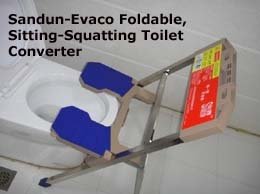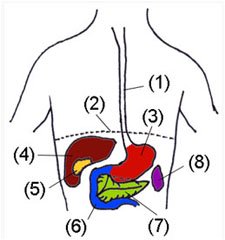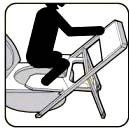|
GERD (Gastro-Esophageal Reflux Disease) and Hiatus Hernia
Gastro-esophageal reflux disease, or GERD, is a condition in which digestive acids in the stomach leak into the esophagus. It is often associated with hiatus hernia (or hiatal hernia), which occurs when the upper part of the stomach bulges through a tear or weakness in the diaphragm into the chest cavity. The location and position of esophagus, diaphragm and stomach can be seen in the diagram below.
In his article, "Hiatus hernia: Is It Preventable?" in the Mar 1981 edition of American Journal of Clinical Nutrition, British physician Dr Denis Burkitt wrote of the connection between hiatus hernia and Western (sitting) toilets. He came to this conclusion based on the higher abdominal pressures arising from sitting -- as compared with squatting -- for waste evacuation and his research:
In 1999, Dr Stephen Sontag, a gastroenterologist, also blamed the Western (sitting) toilet as the main cause of GERD. In his paper, "Defining GERD," in the Mar-Jun 1999 edition of Yale Journal of Biology and Medicine, Dr Sontag explained why and how the using sitting toilets could result in the disease:
Is There Anything That You Can Do About It? A good way to lower the your risk of GERD and hiatus hernia would be to stop using sitting toilets. If you do not have any squatting toilet at home, an easy way would be to get a toilet squatting platform or converter.

Go from GERD and Hiatus Hernia to Home Page Have A Great Story About This Topic?Do you have a personal account about the topic discussed on this page? Please consider sharing it. You can be sure that many people in the world would love to read about and greatly benefit from your experience. It's easy to do. Just let your words flow. Thanks for sharing! What Other Visitors Have SaidClick below to see contributions from other visitors to this page...
I think this actually works Not rated yet
|
The Best Toilet Converter in The World Today!


Helping People All Over
The World Achieve
Good Health Through
Correct Toileting Posture
Watch video on the
origin and story of
the Sandun-Evaco
toilet converter
All about Life,
Hope and Truth...
FREE:
One of the most
astounding books
you will ever read
in your life!









